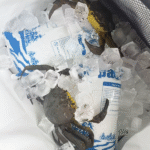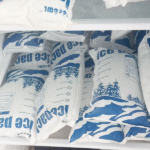Shipping temperature-sensitive products such as pharmaceuticals, seafood, and biotechnology samples demands precision and reliability. Dry ice packs are one of the most effective solutions for maintaining ultra-low temperatures during transport. With the advent of 2025, new regulations and best practices must be adopted for safer, more efficient shipping of perishable goods. This article offers detailed insights into the advantages of dry ice, how it works, and the essential guidelines for compliance, including the latest industry trends.
-
What are the advantages of using dry ice for shipping?
-
How does dry ice shipping work across industries?
-
What should businesses consider when choosing a dry ice shipping solution?
-
What are the latest trends shaping dry ice logistics?
What Are the Advantages of Using Dry Ice for Shipping?
Dry ice packs are an essential tool for shipping temperature-sensitive products. As solid carbon dioxide, dry ice has a sublimation point of -78.5°C (-109.3°F), which is much lower than regular ice, making it ideal for maintaining ultra-low temperatures. Dry ice offers a variety of advantages over traditional ice and other refrigerants.
Key Advantages of Dry Ice Packs:
-
Effective Temperature Control: Dry ice maintains temperatures well below freezing, ensuring that products such as vaccines, seafood, and biotech samples remain preserved.
-
Compact and Lightweight: Compared to water-based ice, dry ice is much lighter and more space-efficient, reducing overall shipping costs.
-
No Residue: Unlike traditional ice, dry ice sublimates into a gas, leaving no liquid residue behind, thus preventing mess or leakage during handling.
| Advantage | Description | Practical Implication |
|---|---|---|
| Efficient Cooling | Maintains ultra-low temperatures | Ensures the preservation of perishable goods |
| Reduced Shipping Weight | Lighter than water-based ice | Helps reduce overall shipping costs |
| No Liquid Residue | Sublimates without leaving moisture | Eliminates potential mess during unpacking |
Practical Tips for Dry Ice Shipping:
-
Pharmaceutical Shipments: Dry ice is ideal for preserving the required temperatures for sensitive medications during transport.
-
Food Shipments: Products like seafood and meat benefit significantly from dry ice, as it maintains their freshness and prevents spoilage.
-
Chemical and Biotech Shipments: For chemicals and biotech products that require consistent temperatures, dry ice ensures reliability.
How Does Dry Ice Shipping Work Across Industries?
Dry ice shipping solutions are designed to maintain the correct temperature throughout the shipping process. The primary elements that influence dry ice shipping are the packaging, transportation, and shipping duration.
Process Overview:
-
Preparation: Dry ice packs are placed in insulated containers that prevent rapid sublimation.
-
Transportation: Dry ice must be transported in ventilated vehicles to ensure safety, as CO2 gas can displace oxygen.
-
Shipping Durations: The effectiveness of dry ice depends on how long the shipment takes. Longer journeys require more dry ice.
Considerations for Successful Dry Ice Shipping:
-
Shipping Duration: Longer trips require more dry ice to maintain the desired temperature.
-
Packaging: Insulated containers and appropriate packaging materials prevent premature sublimation.
-
Regulations: Different shipping regulations must be adhered to, especially for hazardous materials such as dry ice.
What Should You Consider When Choosing Dry Ice Shipping Solutions?
Choosing the best dry ice shipping solution requires evaluating several factors:
Key Considerations for Dry Ice Shipping:
-
Temperature Sensitivity: Some products, such as vaccines, need stricter temperature control. Dry ice or gel packs should be selected based on product needs.
-
Cost Efficiency: While dry ice is effective, it is more expensive than traditional ice packs. Balance the product’s value with shipping costs to determine the best solution.
-
Safety: Dry ice is hazardous if mishandled. Proper safety protocols, such as training staff and using insulated containers, are essential.
| Consideration | Description | Recommendation |
|---|---|---|
| Temperature Sensitivity | Products require different cooling levels | Choose dry ice for colder temperature needs |
| Cost Efficiency | Dry ice is more expensive than regular ice | Balance cost with the value of the goods |
| Safety | Dry ice can be hazardous if mishandled | Ensure proper training and safe handling |
Latest Trends in Dry Ice Logistics for 2025
The dry ice shipping industry continues to evolve with innovations designed to improve both safety and efficiency. The following trends are shaping the future of cold chain logistics:
1. Growing Demand for Fast Delivery
As the e-commerce market grows, particularly for food and pharmaceuticals, there is an increasing demand for faster deliveries. Real-time tracking systems and optimized logistics networks have emerged to address this demand.
2. Eco-friendly Innovations
With sustainability becoming a priority, the industry has seen a rise in eco-friendly dry ice packaging. Companies are also using renewable energy for manufacturing dry ice and recyclable packaging materials to reduce their carbon footprint.
3. IoT in Dry Ice Monitoring
IoT sensors are being used to monitor temperature conditions in real-time during transit. These sensors ensure that the products are kept within the required temperature ranges, enhancing reliability.
4. Enhanced Regulatory Compliance
With the tightening of regulations, especially in the transport of medical goods, the dry ice shipping industry is placing a greater focus on compliance. Businesses are ensuring that all shipments adhere to the latest handling, labeling, and packaging guidelines.
How Can You Ensure Compliance and Safety in Dry Ice Shipping?
Ensuring safety and compliance with dry ice shipping is crucial. The following best practices can help businesses remain compliant and keep their shipments safe:
Best Practices:
-
Training: Properly train personnel handling dry ice to ensure compliance with safety regulations.
-
Documentation: Keep accurate records, including temperature logs, packaging details, and shipping documents.
-
Audits: Perform regular audits to verify that shipping practices are in line with regulations and industry standards.
Conclusion: How to Improve Your Dry Ice Shipping Process in 2025
Shipping with dry ice is a critical part of ensuring the safe transport of temperature-sensitive products. By following the outlined best practices, staying compliant with regulations, and embracing technological advancements, businesses can optimize their cold chain logistics.
Next Steps:
Consult with cold chain logistics experts to determine the best shipping solutions based on your product’s temperature sensitivity, shipping duration, and regulatory requirements.
About Tempk
Tempk is a leading provider of advanced cold chain solutions. We specialize in dry ice packs, insulated liners, and temperature monitoring tools to ensure the safe transport of pharmaceuticals, biotech products, and food. Our dedication to quality, innovation, and regulatory compliance sets us apart in the cold chain logistics sector.
Call to Action: Contact us today for expert advice on your dry ice shipping needs and let us help optimize your logistics.
























